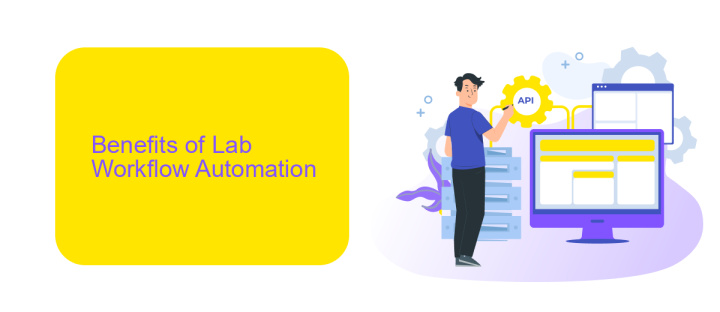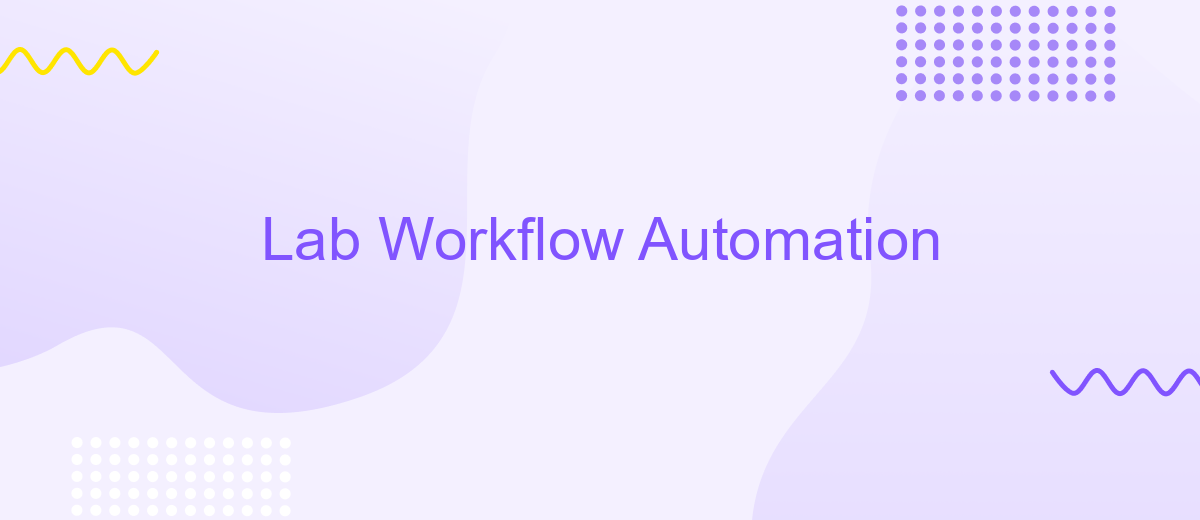Lab Workflow Automation
Lab workflow automation is revolutionizing the way scientific research and diagnostics are conducted. By integrating advanced technology and streamlined processes, laboratories can significantly enhance efficiency, reduce human error, and accelerate the pace of discovery. This article explores the key benefits, tools, and strategies for implementing automation in lab environments, providing insights into how this transformation is shaping the future of science and medicine.
Introduction
Lab Workflow Automation is revolutionizing the way laboratories operate by streamlining processes, reducing human error, and increasing overall efficiency. By leveraging advanced technologies and software solutions, laboratories can now achieve higher levels of productivity and accuracy, ultimately enhancing the quality of their research and services.
- Automated data entry and management
- Integration of various lab instruments and systems
- Real-time monitoring and reporting
- Enhanced sample tracking and inventory management
- Improved compliance with regulatory standards
One of the key aspects of lab workflow automation is the integration of different systems and tools. Services like ApiX-Drive facilitate seamless integration by allowing laboratories to connect various applications and automate data transfer between them. This not only saves time but also minimizes the risk of errors associated with manual data handling. By adopting such automation solutions, laboratories can focus more on their core scientific activities and less on administrative tasks.
Benefits of Lab Workflow Automation

Lab workflow automation offers numerous benefits, including increased efficiency and accuracy. By automating repetitive tasks, laboratories can significantly reduce the time required for data entry, sample processing, and result analysis. This not only accelerates the overall workflow but also minimizes human errors, ensuring more reliable and consistent results. Additionally, automation allows lab personnel to focus on more complex and value-added tasks, enhancing productivity and job satisfaction.
Another key advantage of lab workflow automation is its ability to integrate various systems and processes seamlessly. Tools like ApiX-Drive facilitate the integration of different laboratory instruments, software, and databases, enabling smooth data transfer and communication between them. This interconnected environment ensures that all components of the lab work in harmony, reducing bottlenecks and improving overall efficiency. Moreover, automated systems can easily scale to accommodate growing workloads, making them a future-proof solution for modern laboratories.
Types of Lab Workflow Automation Solutions

Lab workflow automation solutions come in various forms, each designed to streamline different aspects of laboratory operations. These solutions can significantly enhance efficiency, accuracy, and productivity in lab environments.
- Laboratory Information Management Systems (LIMS): These systems manage samples, associated data, and workflows, ensuring data integrity and compliance.
- Automated Sample Handling: Robotics and automated instruments handle repetitive tasks such as sample preparation, reducing human error and increasing throughput.
- Data Integration Tools: Solutions like ApiX-Drive facilitate seamless integration between various lab instruments and software, enabling efficient data transfer and analysis.
- Electronic Lab Notebooks (ELNs): ELNs replace traditional paper notebooks, offering a digital platform for recording and managing experimental data.
- Automated Reporting Systems: These systems generate and distribute reports automatically, saving time and ensuring consistency in data presentation.
By implementing these automation solutions, laboratories can optimize their workflows, reduce manual intervention, and focus more on critical research activities. The integration tools like ApiX-Drive further enhance the interoperability of lab systems, ensuring smooth data flow and improved decision-making processes.
Implementation Considerations

When implementing lab workflow automation, it is crucial to consider several key factors to ensure a smooth transition and effective operation. Initially, assess the specific needs of your laboratory, including the types of tasks that can be automated and the potential benefits of automation.
Next, evaluate the compatibility of existing equipment and software with the new automation systems. Ensuring seamless integration between current and new technologies is vital for maintaining operational efficiency. Utilizing integration services such as ApiX-Drive can facilitate the connection between various systems and streamline data flow.
- Identify and prioritize tasks that will benefit most from automation.
- Ensure compatibility and integration with existing systems.
- Train staff to effectively use and manage new automated processes.
- Monitor and evaluate the performance of automated systems regularly.
Finally, consider the scalability of the automation solution. As your lab grows, the automation system should be able to accommodate increased workloads and additional processes. Proper planning and continuous evaluation will help maximize the benefits of lab workflow automation.
Case Studies and Best Practices
One notable case study involves a leading pharmaceutical company that implemented lab workflow automation to streamline their research and development processes. By integrating advanced robotic systems and data analytics tools, they were able to reduce manual labor, minimize human error, and accelerate data processing. This transformation not only improved their productivity but also enhanced the accuracy of their experimental results, leading to faster drug discovery and development timelines.
Another best practice example is a biotechnology firm that leveraged ApiX-Drive to integrate various laboratory instruments and software applications seamlessly. By using ApiX-Drive's powerful integration capabilities, they connected their laboratory information management system (LIMS) with other essential tools, such as electronic lab notebooks (ELNs) and data analysis software. This integration enabled real-time data sharing and automated workflows, significantly reducing the time spent on data entry and manual tasks. As a result, the firm experienced improved data integrity and more efficient lab operations.
FAQ
What is Lab Workflow Automation?
How can Lab Workflow Automation improve efficiency?
What types of tasks can be automated in a lab?
How do I integrate different lab systems for automation?
Is Lab Workflow Automation cost-effective?
Strive to take your business to the next level, achieve your goals faster and more efficiently? Apix-Drive is your reliable assistant for these tasks. An online service and application connector will help you automate key business processes and get rid of the routine. You and your employees will free up time for important core tasks. Try Apix-Drive features for free to see the effectiveness of the online connector for yourself.

